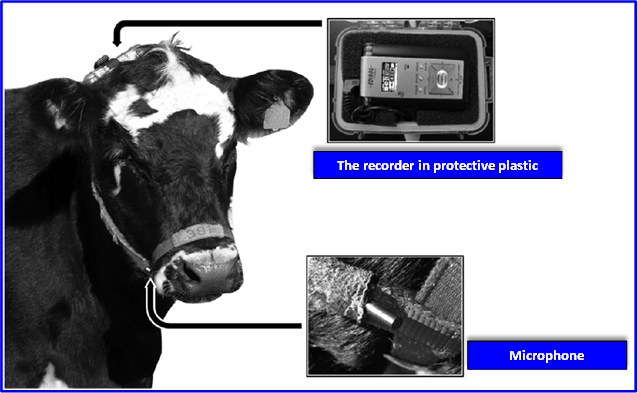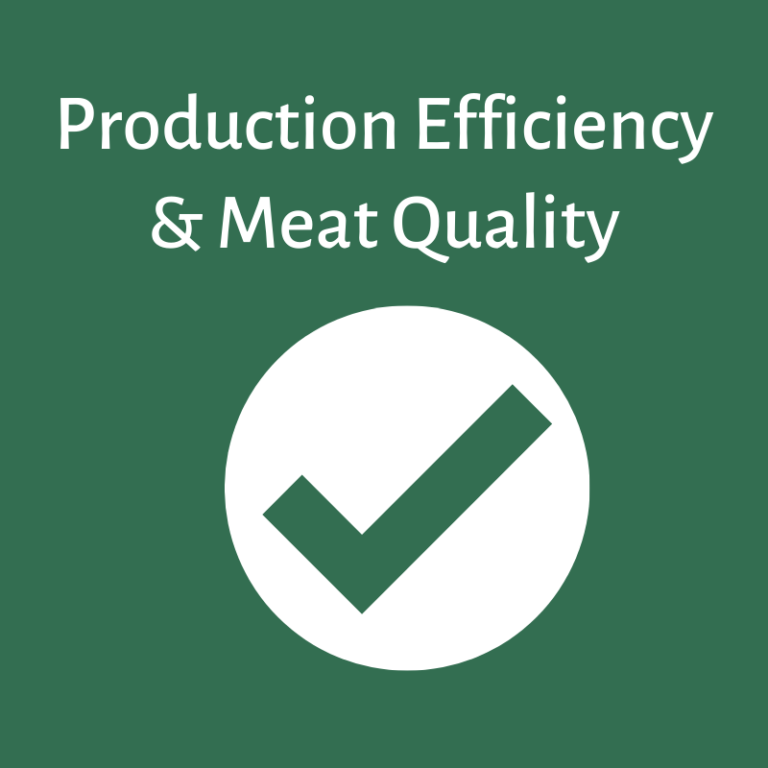Estimating feed consumption is important in any cattle production system to improve animal nutrition and thus be able to achieve high animal performance. However, gathering accurate data from grazing animals is much more complex, difficult, and expensive than with animals from feedlot systems.
A publication by Clapham et al. (2011), for example, described a system that automatically detects, classifies, and quantifies ingestive events in beef cattle under grazing with acoustic recording and analysis. A wide-frequency acoustic microphone is placed close to the animal’s mouth, and the signals (duration, amplitude, spectrum, and energy) are linked to ingestive events such as biting and chewing, with a large amount of data handled by streaming technology.
The experiment was conducted at West Virginia University - Willow Bend Farm, USA. Angus-cross steers or heifers (with a live weight of 450–550 kg), 16–18 months old and halter-trained, were used in the experiments. The recording system is shown in the figure below.

Figure source: Clapham et al. (2011). Heifer wearing a halter with attached digital recorder and microphone (*with permission from Elsevier (Elsevier Licence number: 4983511077265).
The materials used in this experiment, as well as the models and the company names, are described in the table below. The digital recorder and the omnidirectional Lavalier microphone were mounted on a nylon cow halter. To protect it against rainwater, the recorder was housed in a water-resistant plastic case, which was screwed into the rear handle of the halter to be positioned at the back of the animal’s head. The microphone was positioned 5 cm from the right corner of the animal’s mouth in front of the halter strap; four-inch-wide Vetrap tape was used to secure the microphone and cable to the halter. The recording system was designed to minimally interfere with the animals’ behaviour. The analysis parameters can be reconfigured for different animals, forages, and other changing conditions. For the identification, enumeration, and measurement of bite events in pre-processed files, a sound analysis programme for Windows was used: SIGNAL (version 5.00.28, Engineering Design, USA). The software analysed each sound file and automatically detected and measured bite events, recording the measurement data in a log file. The system mounted on the halter did not appear to restrict animal activity because it was light and did not cause a nuisance.
Materials | Model/Company | Country |
Digital recorder | Edirol R-09 24-bit recorder, Programme Version 1.20, Roland Corporation | USA |
Lavalier microphone | Sennheiser ME 2-US, Sennheiser Electronic GmbH & Co | Germany |
Halter | Weaver Leather | USA |
Protective case | Pelican 1020 Micro Case, Pelican Products, Inc. | USA |
Vetrap tape | 3 M Animal Care Products | USA |
In a review paper, acoustic and another type of sensors for monitoring cattle jaw movements and behaviour when grazing were described and compared, and the general conclusion was that this approach and others worked well in controlled studies, but that further improvements are necessary to implement this innovation in practice, such as further calibration if used in different conditions (different types of pasture or different background noises, for example) and to overcome technical issues such as data limitation and power supply needs. They proposed a combination of sensors, such as accelerometers and microphones for better monitoring of biting.
Impact on:
 | Cost of feeding maybe reduced. |
 | Good feeding management leads to better animal comfort and avoidance of ruminal disorders. |
 | Improved animal performance. |
 | Grazing management can be improved to avoid future degradation of the area. |
Authors: Jakeline Vieira Romero, Virginia C. Resconi.
Source of information:
- Clapham et al. 2011. Computers and Electronics in Agriculture. 76 (1): 96-104.
- Engineering Design - Software for sound analysis: www.engdes.com
- Andriamandroso et al. 2016. Biotechnol. Agron. Soc. Environ. 20(S1).